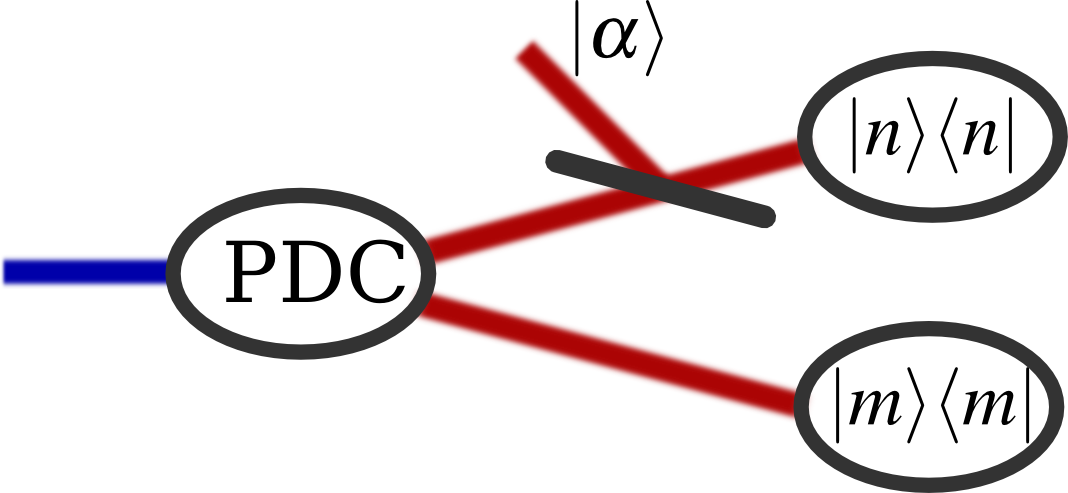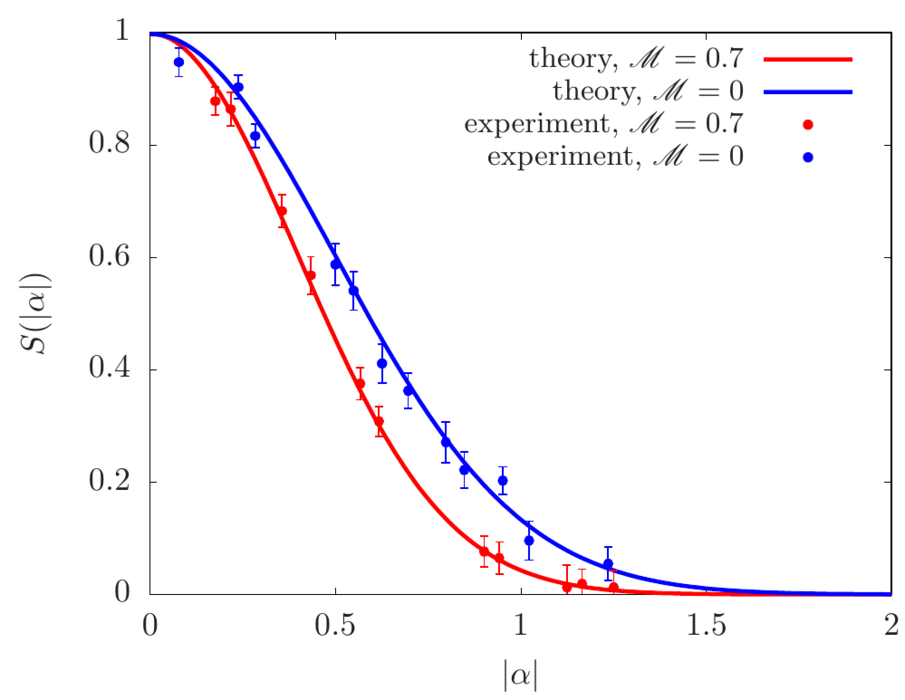The characterization of quantum states is an essential part of quantum optics. One particular task is the estimation of squeezing in so called two-mode squeezed states.
In a recent publication in Physical Review Letters*, researchers from the integrated quantum optics group in Paderborn in collaboration with theoretical physicists from Olomouc in the Czech Republic and Madrid in Spain have demonstrated a method to measure such squeezing in a simplified way compared to the standard technique.
The term squeezing refers to the distribution of phase-space quadratures x and p, the quantum analogues of amplitude and phase. The variance of these quadratures is limited by the Heisenberg uncertainty, which is a fundamental limit that precludes the simultaneous measurement of both quantities with high precision. Nevertheless, one of these two quantities can be \italic{squeezed} at the expense of the other. This has direct practical implications in metrology as it reduces the uncertainty of phase-measurements. Moreover, two-mode squeezed states with four quadratures (x_1, x_2, p_1, p_2) show entanglement and can be used for secure quantum key distribution.
To characterize the squeezing strength in a two-mode state is a challenging task, because any known scheme, most prominently balanced homodyne detection, requires two reference fields with known phases relative to each other and to the two squeezed modes. While conceptually simple, phase-locking pulses at the single photon level is experimentally difficult. In this publication, the authors show that the essential information can be obtained with a scheme that does not require phase locking.
This scheme, known as direct probing, is based on an interference with a reference field that has a known amplitude but an unknown phase. After the interference, photon-number measurements are performed, from which the amplitude correlations between the two modes can be reconstructed and their squeezing revealed. The use of a reference field ensures a mode-selective measurement, which allows to estimate the squeezing in the particular mode of the reference field.
However, while the experiment is simple compared to homodyne detection, the data analysis proved to be rather complicated due to the fact that the used photon-number detectors based on InGaAs avalanche photodiodes show imperfections that are difficult to model. Nevertheless, a recently proposed analysis method called pattern tomography, which was developed by the theory collaborators, allowed to overcome these issues.
All in all, this direct probing approach poses an alternative to the established homodyne detection scheme and thus adds another useful technique to the toolbox of quantum-state characterization.
* Phys. Rev. Lett. 116, 133601 (2016)
Publication: Local sampling of the Wigner function at telecom wavelength with loss-tolerant detection of photon statistics


